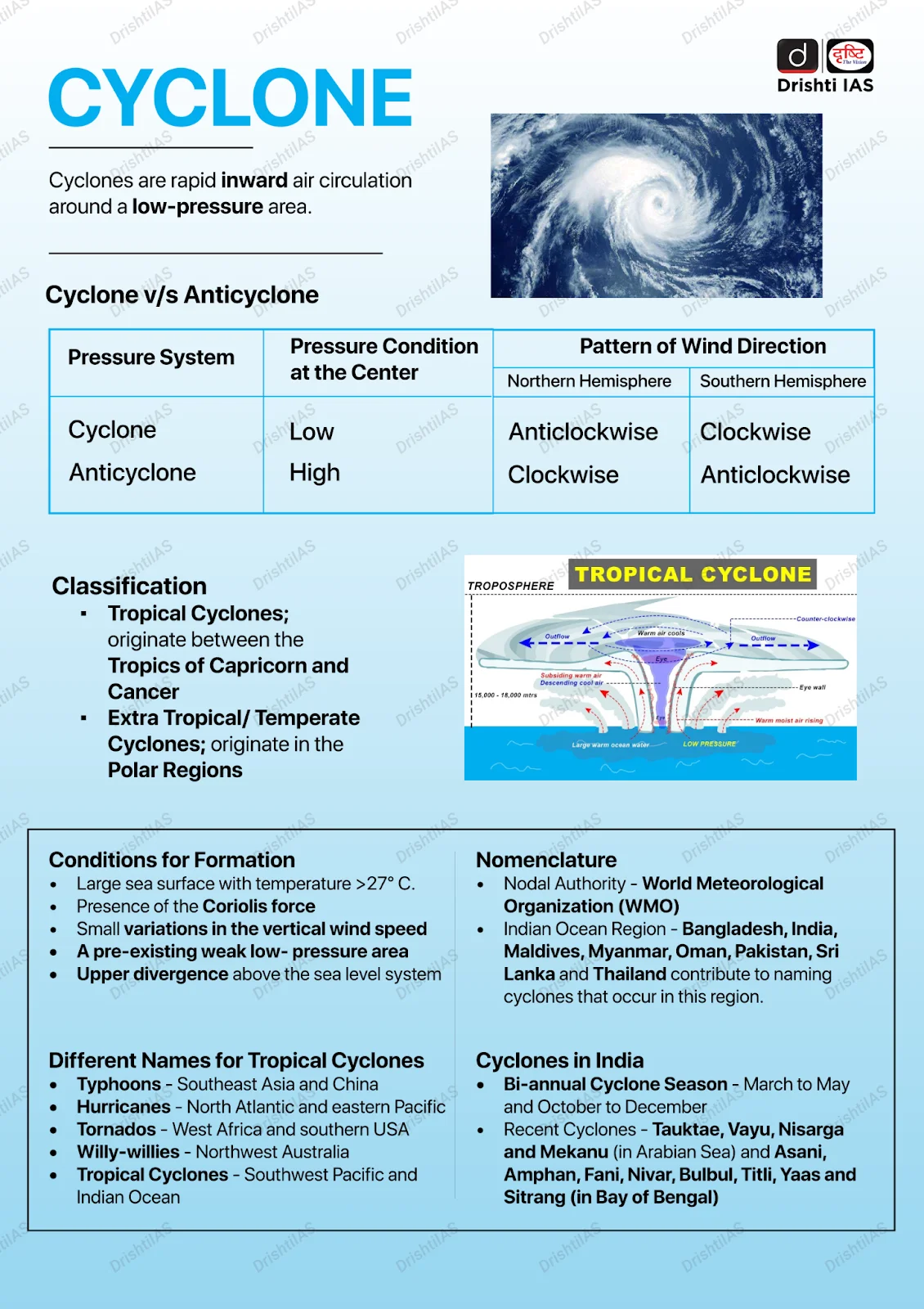Maharashtra
Cyclone Shakhti
- 08 Oct 2025
- 2 min read
Why in News?
Cyclone Shakti, the season's first storm, has intensified into a severe cyclonic storm southwest of Gujarat, though it is not expected to significantly impact the Indian landmass.
- Originating in the Arabian Sea and named by Sri Lanka, Cyclone Shakti has reached wind speeds of 100 km/h.
Key Points
- Definition: Cyclones are fast air circulations around low-pressure areas, rotating anticlockwise in the Northern Hemisphere and clockwise in the Southern, often causing storms and severe weather.
- Cyclone Formation in Arabian Sea: The Arabian Sea, particularly its central and southern parts, serves as a warm pool with ideal Sea Surface Temperature (SST) (at least 27°C), favourable for cyclone formation.
- Also, the Madden-Julian Oscillation (MJO) is a large weather system that moves eastward around the tropics.
- When its active phase is over the Arabian Sea, it creates favourable conditions for cyclones — including more moisture, low wind shear, and strong upward air movement.
- Also, the Madden-Julian Oscillation (MJO) is a large weather system that moves eastward around the tropics.
- Classification of Cyclones: IMD classifies low-pressure systems in the Bay of Bengal and Arabian Sea by damage potential, following World Meteorological Organisation (WMO) guidelines.
- Naming of Cyclones: The WMO/ESCAP (United Nations Economic and Social Commission for Asia and the Pacific) Panel on Tropical Cyclones, which includes 13 North Indian Ocean countries, manages cyclone naming for the Arabian Sea and Bay of Bengal.
- The panel has a pre-set list of names submitted by 13 countries to be used sequentially.
- Names are chosen in order, column by column, regardless of where the cyclone forms.








